The full name of Frankfurt Airport is Frankfurt am Main Airport (German: Flughafen Frankfurt am Main). It is located in Frankfurt, Germany, near the Rhine. The airport covers an area of 2,300 hectares (5683 acres), has 2 terminals and 4 runways.
In 2019, Frankfurt Airport received 70.5 million passengers. The cargo volume reached 2,128,476 tons, the aircraft took off and landed 513,912 sorties, and the airport served more than 300 destinations on five continents.
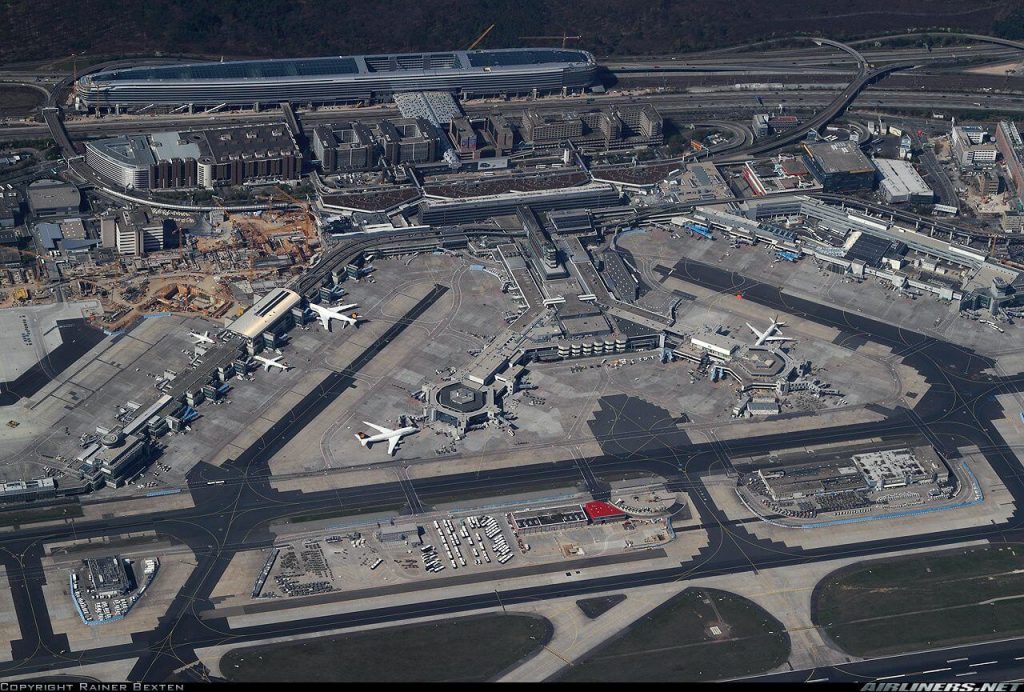
History
- In 1935, the predecessor of Frankfurt Airport “Flug-und Luftschiffhafen Rhein-Main” began to be constructed, including a two-story station, a six-story tower, and other operations and auxiliary facilities used to maintain and store aircraft.
- On July 8, 1936, Rhine-Main Airport and Airship Port officially opened. It is the base of Germany’s two largest airships LZ 127 Graf Zeppelin and LZ 129 Hindenburg. In 1937, the airport transported 70,000 passengers and 966 tons of cargo.
- On May 6, 1937, a serious airship explosion occurred. The LZ 129 Hindenburg airship exploded and caused 36 deaths. The accident marked the end of the airship era.
- On May 6, 1940, the base was converted to military use. The Luftwaffe expanded the single runway and built hangars and other facilities.
- In 1944, the airport was blown up by Allied forces and destroyed buildings and oil depots. It was later occupied by the US army. In 1945, the US military added a new temporary runway at the airport. The airport was later used by the US military as a US air force base in Europe.
- In 1951, the airport lifted restrictions on German civil aviation, and civil aviation business began to grow again. In 1952, Frankfurt Airport received 400,000 passengers.
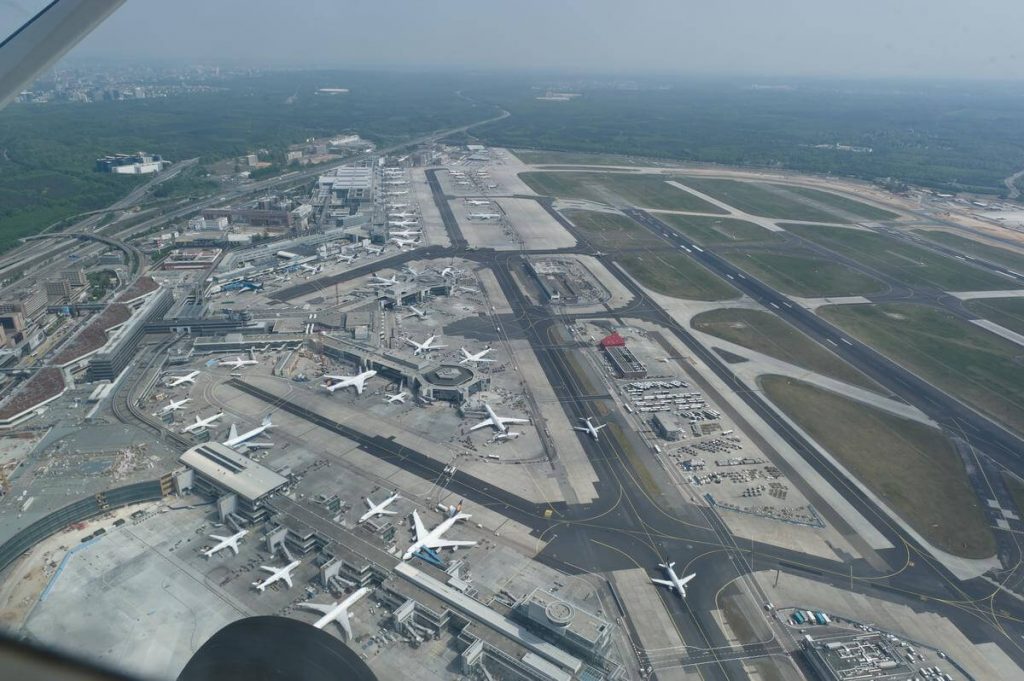
- In 1955, Lufthansa resumed flights to and from Frankfurt. In the same year, the Federal Republic of Germany regained its air sovereignty from the Allied forces.
- In 1957, the northern runway was extended to 3,000 m (9,843 ft) and then to 3,900 m (12,795 ft) to make it compatible with jet aircraft.
- In 1958, the new terminal “Empfangsanlage Ost” opened and the airport became a major international airline hub.
- In 1961, Frankfurt had 2.2 million passengers and 81,000 takeoffs and landings. It was the second busiest airport in Europe, second only to London Heathrow Airport.
- In 1965, construction of a larger terminal building began, which could accommodate 30 million passengers per year. The southern runway was extended to 3,750 m (12,303 ft) in 1964.
- In 1970, the new hangar was put into use. It accommodated six jet aircraft and was the largest hangar in the world at the time.
- On March 14, 1972, the terminal called Terminal Mitte opened. The old Empfangsanlage Ost ceased operations.
- In 1973, planning for the third runway (called Startbahn 18 West) began. This runway was opened in 1984.
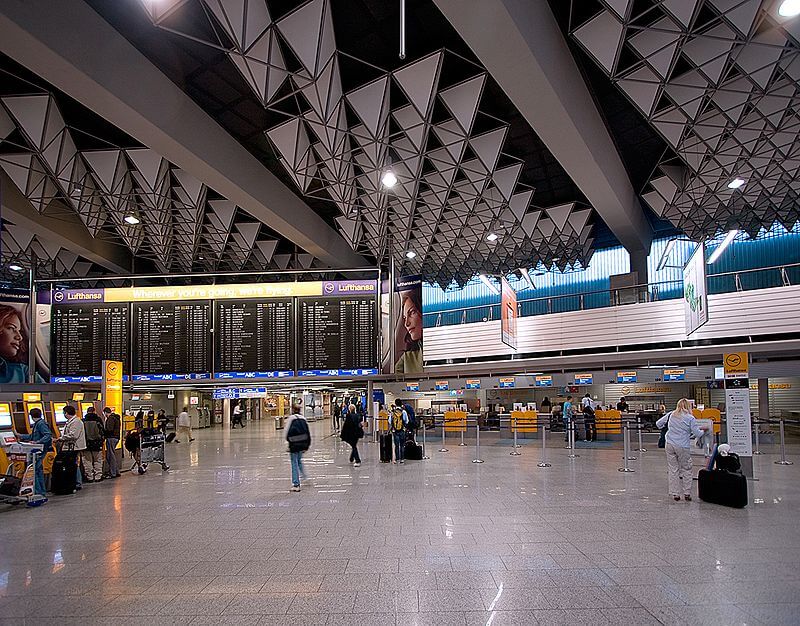
- In 1990, construction of Terminal 2 began. Terminal 2 is divided into D and E terminals. This terminal was opened in 1994, and the passenger volume of the Frankfurt Airport terminal has increased to 54 million passengers every year.
- In 1999, the Frankfurt Airport long-distance station opened. Now it is renamed Frankfurt Airport regional station.
- On December 30, 2005, the Rhine-Main Air Force Base on the ground south of the airport was closed and the US Air Force moved to Ramstein Air Force Base. The airport property was acquired by Fraport.
- In 2008, Hall C of Terminal 1 opened.
- Early 2009. Started construction of a new runway in the Kelsterbach forest. This runway was officially opened on October 20, 2011.
- In June 2010, Lufthansa’s first Airbus A380 went into operation.
- In 2011, a large office building called The Squaire opened at Frankfurt Airport. It covers an area of 140,000 m 2 (1,500,000 square feet). The main tenants are KPMG and two Hilton hotels.
- On October 10, 2012, Pier A-Plus in Terminal 1 opened. This new terminal has 8 parking bays. It provides more seats for wide-body aircraft such as Airbus A380.
- On October 5, 2015, the construction of Terminal 3 began and it is planned to open before 2023.
- In July 2016, the airport celebrated its 80th anniversary.
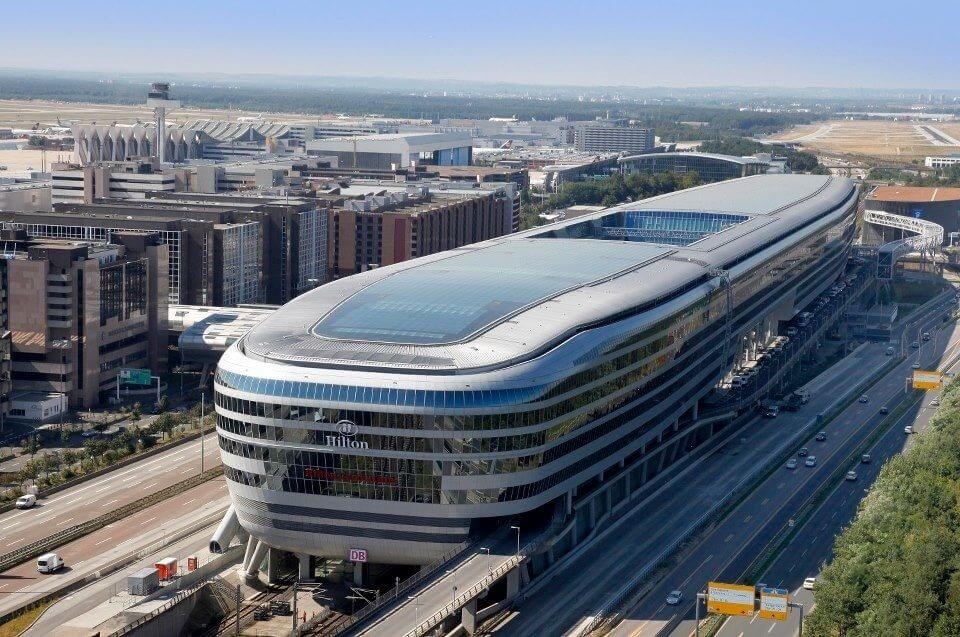
Terminals
Frankfurt Airport has two large main passenger terminals (1 and 2) and a smaller dedicated first-class terminal, operated and exclusively used by Lufthansa.
Terminal 1
Terminal 1 is the larger of the two passenger terminals. The landslide is 420 meters long. It has been expanded several times, divided into terminals A, B, C and Z, and can accommodate approximately 50 million passengers each year.
There are a total of 103 gates in Terminal 1, of which 54 are equipped with jet channels (25 in Hall A, 18 in Hall B, and 11 in Hall C). Hall Z is located at the top of Hall A and shares the same jet bridge between the two halls.
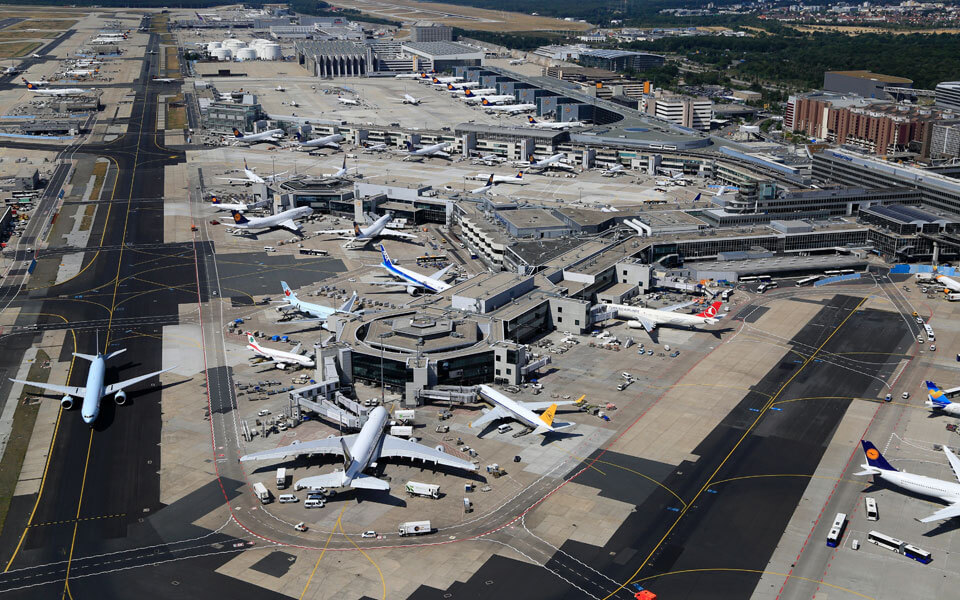
Terminal 2
Terminal 2 opened in 1994 and can accommodate 15 million passengers per year, divided into terminal D and E. The continuous passage between terminal 1C and 2D provides direct but non-public access between the two terminals.
It has eight gates with jets and 34 tarmac racks, for a total of 42 gates, and can handle wide-body aircraft such as Airbus A380.
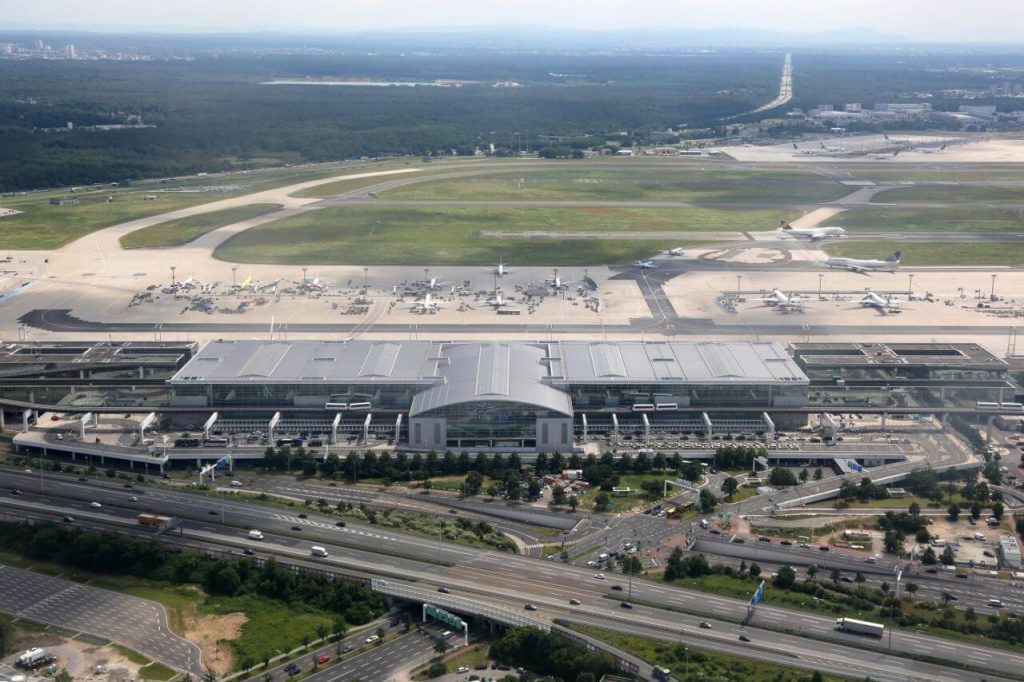
Terminal 3 (under construction)
On October 5, 2015, the construction of Terminal 3 began. The first phase includes the main building and two of the planned four buildings (3H and 3J corridors), which are scheduled to open before 2023 and will accommodate 15 million additional passengers each year. The total cost is estimated at 3 billion euros.
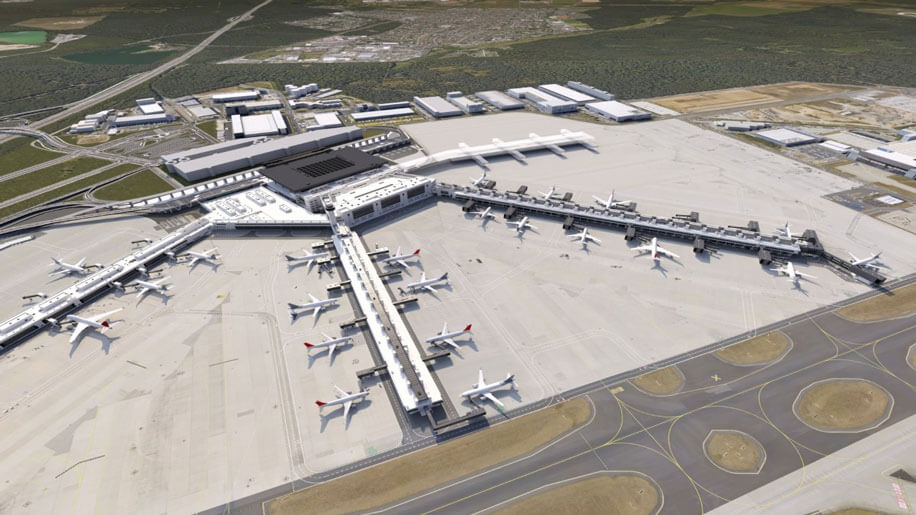
Frankfurt Airport Data
- Country
- Germany
- Region
- Western Europe
- Status
- In use
- Official name
- Frankfurt am Main Airport
- Other name
- Rhein-Main-Flughafen
- Location
- Near Kelsterbach, Frankfurt
- Owner
- Fraport
- Official website
- frankfurt-airport.com
- Operator
- Fraport
- Began
- 1935
- Opened
- Jul-08, 1936
- Airport type
- Public
- Airport code
- IATA: FRAICAO: EDDF
- Airport area
- 5683 acres / 23 km²
- Runway length
- 3*4,000 m, 1*2,800 m
- Passenger traffic
- 70.5 million(2019)
- Freight volume
- 2,128,476 tons (2019)
- Takeoffs and landings
- 513,912 sorties
View Frankfurt Airport on Google Satellite Map
Google satellite maps allow you to see building details more clearly, including natural landscapes such as mountains, rivers, deserts, sea and man-made engineering buildings.
If you are very interested in this engineering building, it is a good idea to click below Google Map icon. We will help you jump to the corresponding location of this building or engineering on Google satellite map.



























































